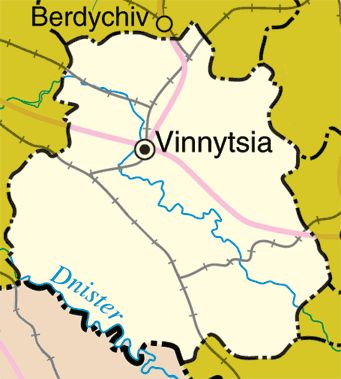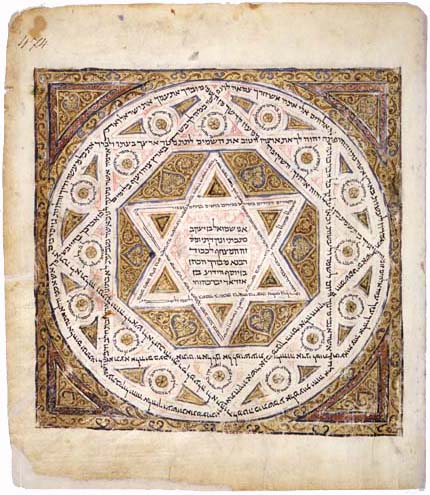|
Synagogue (Bershad)
The Synagogue in Bershad, Vinnytsia Oblast in Ukraine, was built at the begin of the 19th century. It is one of the very few synagogues in Ukraine that was neither destroyed during World War II nor closed by the Soviet authorities in the years after the war. It is still used by the small Jewish community of Bershad. It is not to be confused with the magnificent ''Great Synagogue'', which does no longer exist. Architecture The walls of the synagogue are wattle and daub and white-washed, looking like a common rural building. Its outer dimensions are approximately in length and in width, the height to the cornice is circa with a total height of The synagogue has two main rooms: the men's prayer hall and a western room, which is 2-tired and contains the women's section and perhaps living quarters. An inner wall separates the two rooms. There are eight wooden columns that support the two large wooden beams of the ceiling. The columns divide the space of the prayer hall into thre ... [...More Info...] [...Related Items...] OR: [Wikipedia] [Google] [Baidu] |
Bershad
Bershad ( uk, Бершадь, translit., ''Bershad’''; pl, Berszad; ro, Berșad) is a town in the Vinnytsia Oblast (province) of Ukraine, located in the historic region of Podolia. It is the administrative center of the predominantly-agricultural Bershad Raion (district). Population: History Bershad was first mentioned in 1459. It was a private town of Poland, owned by the families of Zbaraski and Moszyński. Polish nobleman Piotr Stanisław Moszyński built a palace complex in Bershad. Only remaining parts of the complex are the park and the chapel of Moszyński and Jurjewicz families. In 1648, during the Khmelnytsky Uprising under the Cossacks, Maksym Kryvonis conquered Bershad and slew many of the Catholics and Jews there. Before World War II, the city had an important Jewish community. Bershad was famous in the middle of the nineteenth century for its Jewish weavers of the tallit, a ritual shawl worn by Jews at prayer. By the end of the century the demand decreased, a ... [...More Info...] [...Related Items...] OR: [Wikipedia] [Google] [Baidu] |
Vinnytsia Oblast
Vinnytsia Oblast ( uk, Ві́нницька о́бласть, translit=Vinnytska oblast; ; also referred to as Vinnychchyna — uk, Ві́нниччина) is an oblast of western and southwestern Ukraine. Its administrative center is Vinnytsia. The oblast has a population of History Vinnytsia Oblast, first established on February 27, 1932, originally comprised raions (regions) of the following former okruhas of Ukraine (districts of Soviet Ukraine): * Uman Okruha * Berdychiv Okruha * Vinnytsia Okruha * Mohyliv Okruha * Tulchyn Okruha * Shepetivka Okruha * Proskuriv Okruha * Kamianets Okruha In 1935 bordering territories of the oblast were transformed into Soviet border districts: Shepetivka Okrug, Proskuriv Okrug, and Kamianets Okrug. In 1937 the Kamianets Oblast, based on the border districts, was formed (it later became Khmelnytsky Oblast). During World War II the occupying Axis powers split the territory of Vinnytsia Oblast between the General District Shitomir (Zhyto ... [...More Info...] [...Related Items...] OR: [Wikipedia] [Google] [Baidu] |
Ukraine
Ukraine ( uk, Україна, Ukraïna, ) is a country in Eastern Europe. It is the second-largest European country after Russia, which it borders to the east and northeast. Ukraine covers approximately . Prior to the ongoing Russian invasion, it was the eighth-most populous country in Europe, with a population of around 41 million people. It is also bordered by Belarus to the north; by Poland, Slovakia, and Hungary to the west; and by Romania and Moldova to the southwest; with a coastline along the Black Sea and the Sea of Azov to the south and southeast. Kyiv is the nation's capital and largest city. Ukraine's state language is Ukrainian; Russian is also widely spoken, especially in the east and south. During the Middle Ages, Ukraine was the site of early Slavic expansion and the area later became a key centre of East Slavic culture under the state of Kievan Rus', which emerged in the 9th century. The state eventually disintegrated into rival regional po ... [...More Info...] [...Related Items...] OR: [Wikipedia] [Google] [Baidu] |
World War II
World War II or the Second World War, often abbreviated as WWII or WW2, was a world war that lasted from 1939 to 1945. It involved the vast majority of the world's countries—including all of the great powers—forming two opposing military alliances: the Allies and the Axis powers. World War II was a total war that directly involved more than 100 million personnel from more than 30 countries. The major participants in the war threw their entire economic, industrial, and scientific capabilities behind the war effort, blurring the distinction between civilian and military resources. Aircraft played a major role in the conflict, enabling the strategic bombing of population centres and deploying the only two nuclear weapons ever used in war. World War II was by far the deadliest conflict in human history; it resulted in 70 to 85 million fatalities, mostly among civilians. Tens of millions died due to genocides (including the Holocaust), starvation, ma ... [...More Info...] [...Related Items...] OR: [Wikipedia] [Google] [Baidu] |
Soviet Union
The Soviet Union,. officially the Union of Soviet Socialist Republics. (USSR),. was a transcontinental country that spanned much of Eurasia from 1922 to 1991. A flagship communist state, it was nominally a federal union of fifteen national republics; in practice, both its government and its economy were highly centralized until its final years. It was a one-party state governed by the Communist Party of the Soviet Union, with the city of Moscow serving as its capital as well as that of its largest and most populous republic: the Russian SFSR. Other major cities included Leningrad (Russian SFSR), Kiev (Ukrainian SSR), Minsk ( Byelorussian SSR), Tashkent (Uzbek SSR), Alma-Ata (Kazakh SSR), and Novosibirsk (Russian SFSR). It was the largest country in the world, covering over and spanning eleven time zones. The country's roots lay in the October Revolution of 1917, when the Bolsheviks, under the leadership of Vladimir Lenin, overthrew the Russian Provisional Government ... [...More Info...] [...Related Items...] OR: [Wikipedia] [Google] [Baidu] |
Almemar
A bema was an elevated platform used as an orator's podium in ancient Athens. The term can refer to the raised area in a sanctuary. In Jewish synagogues, where it is used for Torah reading during services, the term used is bima or bimah. Ancient Greece The Ancient Greek ''bēma'' () means both 'platform' and 'step', being derived from '' bainein'' (, 'to go'). The original use of the bema in Athens was as a tribunal from which orators addressed the citizens as well as the courts of law, for instance, in the Pnyx. In Greek law courts the two parties to a dispute presented their arguments each from separate bemas. By metonymy, bema was also a place of judgement, being the extension of the raised seat of the judge, as described in the New Testament, in and , and further, as the seat of the Roman emperor, in , and of God, in , when speaking in judgment. Judaism Etymology The post-Biblical Hebrew ''bima'' (), 'platform' or 'pulpit', is almost certainly derived from the Anc ... [...More Info...] [...Related Items...] OR: [Wikipedia] [Google] [Baidu] |
Star Of David
The Star of David (). is a generally recognized symbol of both Jewish identity and Judaism. Its shape is that of a hexagram: the compound of two equilateral triangles. A derivation of the ''seal of Solomon'', which was used for decorative and mystical purposes by Muslims and Kabbalah, Kabbalistic Jews, its adoption as a distinctive symbol for the Jews, Jewish people and their religion dates back to 17th-century Prague. In the 19th century, the symbol began to be widely used among the History of the Jews in Europe, Jewish communities of Eastern Europe, ultimately coming to be used to represent Jewish identity or religious beliefs."The Flag and the Emblem" (MFA). It became representative of Zionism after it was Flag of Israel#Origin of the flag, chosen as the central symbol for a Jewish national flag at the First Zionist Congress in 1897. By the end of World War I, it had become an internationally accepted symbol for the Jewish people, being used on the gravestones of fallen ... [...More Info...] [...Related Items...] OR: [Wikipedia] [Google] [Baidu] |
Holy Ark
A Torah ark (also known as the ''Heikhal'', or the ''Aron Kodesh'') refers to an ornamental chamber in the synagogue that houses the Torah scrolls. History The ark, also known as the ''ark of law'', or in Hebrew the ''Aron Kodesh'' or ''aron ha-Kodesh'' ("holy ark") by Ashkenazi communities and as the ''Heikhal'' ("sanctuary") among Sefardi communities. ''Aron Kodesh'' comes from Hebrew אָרוֹן קׄדֶש ''ʼārōn qōdeš'' (i.e. A''ron Kodesh''), ''Holy Ark''. This name is a reference to the ''’ārōn haqqōdeš'', the Hebrew name for the Ark of the Covenant which was stored in the Holy of Holies in the inner sanctuary of both the ancient Tabernacle and the Temple in Jerusalem. Similarly, ''Hekhál'', also written ''hechal'', ''echal'' or ''heichal'' — and sometimes also ''Echal Kodesh'' (mainly among Balkan Sephardim) comes from Hebrew הֵיכָל ''hēkhāl'' (palace), was used in the same time period to refer to the inner sanctuary. The ''hekhal'' contained the ... [...More Info...] [...Related Items...] OR: [Wikipedia] [Google] [Baidu] |
List Of Synagogues In Ukraine
This List of synagogues in Ukraine contains active, otherwise used and destroyed synagogues in Ukraine. In all cases the year of the completion of the building is given. Italics indicate an approximate date. External links Old postcards and photos of synagogues in Ukraine Old pictures of synagogues (many in Ukraine) - alamy.de Literature * Maria and Kazimierz Piechotka: ''Landscape With Menorah: Jews in the towns and cities of the former Rzeczpospolita of Poland and Lithuania.'' Salix alba Press, Warsaw 2015, . * Maria und Kazimierz Piechotka: ''Heaven’s Gates. Wooden synagogues in the territories of the former Polish-Lithuanian Commenwealth.'' Polish Institute of World Art Studies & POLIN Museum of the History of Polish Jews, Warschau 2015, . * Maria und Kazimierz Piechotka: ''Heaven’s Gates. Masonry synagogues in the territories of the former Polish–Lithuanian Commonwealth.'' Polish Institute of World Art Studies & POLIN Museum of the History of Polish Jews, Warschau ... [...More Info...] [...Related Items...] OR: [Wikipedia] [Google] [Baidu] |
Synagogues In Ukraine
A synagogue, ', 'house of assembly', or ', "house of prayer"; Yiddish: ''shul'', Ladino: or ' (from synagogue); or ', "community". sometimes referred to as shul, and interchangeably used with the word temple, is a Jewish house of worship. Synagogues have a place for prayer (the main sanctuary and sometimes smaller chapels), where Jews attend religious Services or special ceremonies (including Weddings, Bar Mitzvahs or Bat Mitzvahs, Confirmations, choir performances, or even children's plays), have rooms for study, social hall(s), administrative and charitable offices, classrooms for religious school and Hebrew school, sometimes Jewish preschools, and often have many places to sit and congregate; display commemorative, historic, or modern artwork throughout; and sometimes have items of some Jewish historical significance or history about the Synagogue itself, on display. Synagogues are consecrated spaces used for the purpose of Jewish prayer, study, assembly, and read ... [...More Info...] [...Related Items...] OR: [Wikipedia] [Google] [Baidu] |



.jpg)


.jpg)